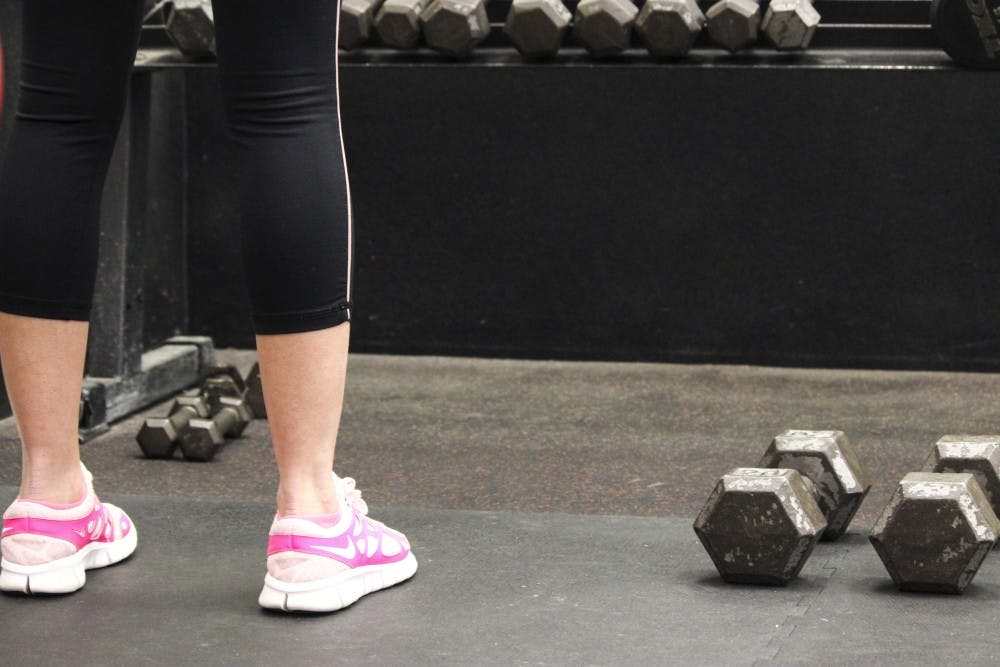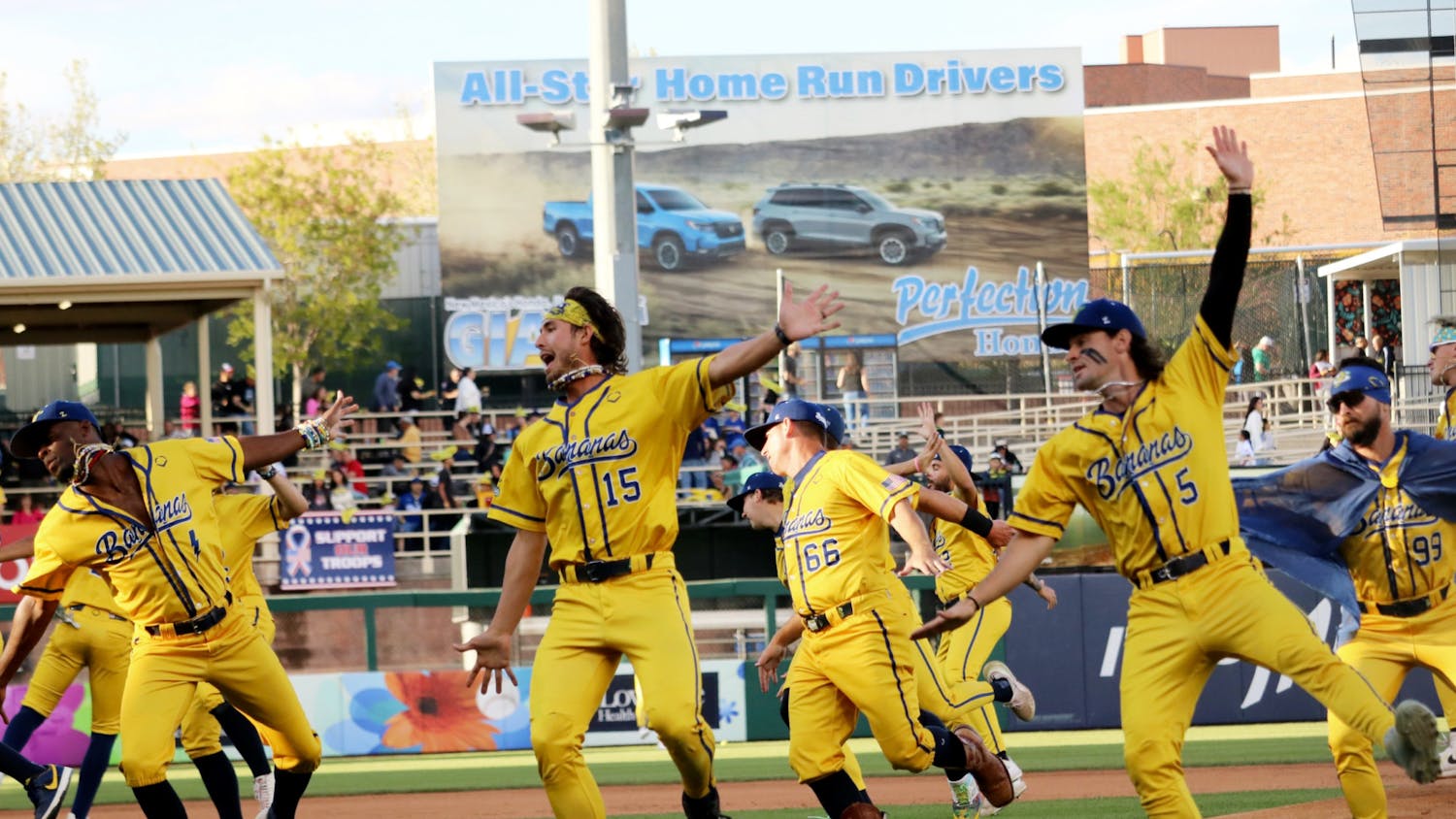Sometimes it sticks. Sometimes it doesn’t.
Vanessa Rodriguez, a first-year graduate student in public administration, said she started working out three years ago as a New Year’s resolution. There have definitely been times where she didn’t feel like working out, she said, but she dedicated herself all the same.
Rodriguez said since she made her resolution, she has noticed a trend. In January the gym is always really busy, but come February, the crowds begin to dwindle.
She typically works out in the cardio and weight-lifting room, but due to the high volume of students, Rodriguez said, she now works out in the gymnasium. This means running up and down the bleachers and doing other various cardio workouts.
A likely cause for the drop-off is due to finals and the heavy load of homework that hits a few weeks into school, she said. It can be difficult to juggle all of it as a student and an easy way to make time is to cut out gym time.
“What I did to stick with it is even if I do it for less of a time I am still going to do,” Rodriguez said. “If I regularly work out for an hour and a half, and from time to time and I can’t really commit to that full hour and a half, I’ll do 25 to 30 minutes ... If I can’t make it to the actual gym I will do it at home.”
Len Kravitz, a doctoral candidate in exercise science, said the important part of making New Year’s resolutions is making sure they are a reality, not simply wishful thinking.
“Getting and staying active and being physical is about living independently, staying mentally sharp and preventing chronic diseases like cardiovascular disease and cancer,” Kravitz said. “Most people tend to only focus on losing weight as a New Year’s resolution, which is too narrow of a focus.”
Kravitz has some suggestions that may help make a resolution stick. This is broken down into eight steps to help keep individuals active and fit. His steps are:
- Widen your focus
- Set priorities
- Establish a ‘new’ mindset
- Make an appointment to exercise
- Discover the joys of working out
- Work out with someone
- Mix up the workout
- Keep it fun and
- Look forward to the next workout
Each of these steps works on making the workout a reality as well as setting goals that are reachable, he said.
Get content from The Daily Lobo delivered to your inbox
Exercising with friends is also a good way to stay on track, Kravitz said. Going with friends to a group workout or working with a trainer can also add some excitement to getting fit.
Ultimately, the best way to stick to a workout schedule is to make it fun and look forward to the next workout, he said.
“Your momentum will continue to make it more jubilant,” Kravitz said.
According to statistics released Jan. 1, 2014, by Statisticbrain.com, 45 percent of Americans make a New Year’s resolution. Of those, 47 percent of Americans make a self-improvement or education-related resolution. That is followed by weight related resolutions at 38 percent. Thirty-nine percent of people in their 20s achieve their resolution each year. However, only 14 percent of people over 50 achieve their resolution.
The statistics also reveal the duration of resolutions: within the first week 75 percent of the resolutions still stand. It drops four percent after two weeks. By six months, only 46 percent of Americans say they are keeping to their resolutions.
However, people who explicitly make resolutions are 10 times more likely to attain their goals than people who do not explicitly make New Year’s resolutions, according to the statistics.
Eric Boeglin, the operations manager for recreational services, said over the 17 years he has worked at the gym he sees a massive decline from January to February, possibly due to New Year’s resolutions.
On average, the gym sees 2,000 people a day, he said. But that number doesn’t account for people who may just need something out of their locker; essentially there is no way to tell why people are coming into the gym.
Gym attendance declines after about two to three weeks when students realize they haven’t done any homework, he said. At the same time the gym sees fewer and fewer people as the semester goes on.
As a student himself, Boeglin said, he is equally guilty of waiting till the last minute as well.
Another interesting trend is the increase of people at the gym two weeks before spring break, he said. People must think they can get in shape in two weeks.
Curtis Peralta, a supervisor and gym attendant who works mostly in the equipment room, said he also notices the increase of students during the beginning of the year mostly through locker rentals.
“It is busier the first week of spring than the first week of fall,” Peralta said.
By finals week it’s dead, he said.
“It’s a mix of school and then just probably laziness,” Peralta said.
Moriah Carty is the assistant culture editor for the Daily Lobo. She can be reached at cultureassistant@dailylobo.com or on Twitter @MoriahCarty.






